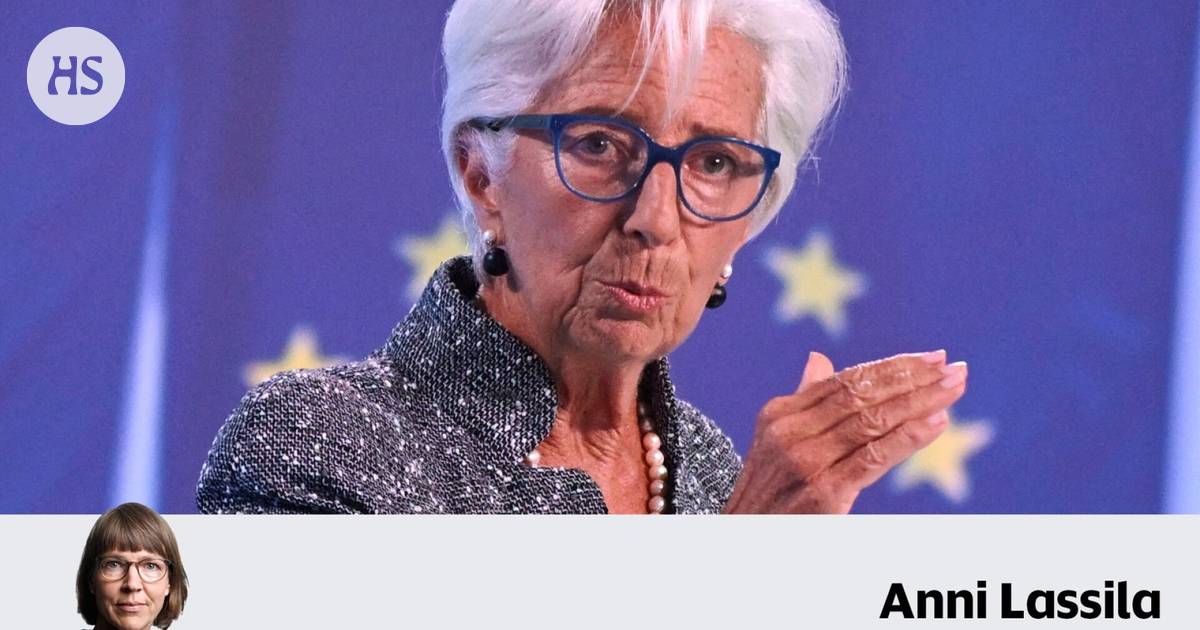HS analysis|The market is guessing how much the European Central Bank will lower its deposit rate in December. The central bank’s decisions are directly reflected in the price of Finnish mortgages, writes HS’s financial reporter Anni Lassila.
The summary is made by artificial intelligence and checked by a human.
The one-year euribor rose to 2.63% on Friday from 2.55% on Thursday.
Since July, the Euribors have fallen rapidly.
The ECB’s interest rate decisions affect reference interest rates and market expectations.
Nordea bank’s Jan von Gerich thinks it is most likely that the ECB will lower the interest rate by a quarter percent in December.
Home loans the most common reference interest rate, the one-year euribor, jumped clearly upwards on Friday to 2.63% from Thursday’s 2.55%. The direction was unexpected, as all Euribors have fallen rapidly since July. At the beginning of July, the interest rate for the year was still 3.6 percent.
But how low is the euribor heading? Or does the upward bounce indicate a reversal of direction?
It largely depends on the interest rate decisions of the European Central Bank (ECB) and related expectations.
The direction of reference interest rates has certainly not changed permanently, but the market now reacts sensitively to even small changes in the mood in the economy and in the figures about the economy.
When inflation accelerated sharply just over two years ago, the ECB started to raise key interest rates. The most important policy rate, i.e. the central bank’s overnight deposit rate, rose at a rapid pace.
In September 2023, the ECB raised the deposit rate to exactly four percent. Euribors follow the key interest rates and sometimes the market prices them a little over, like just a year ago in September.
In September 2023, the one-year Euribor rose to its highest level of more than 4.2 percent. For many mortgage payers, that meant a loan interest rate of about five percent. The change to minus interest rates just 2.5 years ago was drastic.
Four percent remained the central bank’s interest rate peak and after that interest rates started to slowly decrease. The central bank’s monetary policy is a careful balancing exercise.
If interest rates are lowered too quickly, inflation may start to accelerate again. If the tight interest rate policy is continued for too long, the economy will suffer disproportionately and inflation may fall and get stuck too far below the two percent target level.
of Nordea Bank chief analyst Jan von Gerichin fresh according to the analysis the market is now speculating whether the ECB will lower the deposit rate in December by a quarter of a percent or as much as half a percentage point.
Governor of the Central Bank Christine Lagarde has emphasized that the bank makes its decision based on the whole, not just on the basis of one numerical value.
That’s why the market is now monitoring many indicators and not just inflation figures. Interest rate expectations have been affected by the weak news from the economies of the euro countries in recent weeks. The German economy in particular is coughing.
Worn out however, there was better than expected news about the economy of the entire euro area during the week. In July–September, the euro area economy grew by an average of 0.9 percent compared to the same period last year.
Inflation, on the other hand, accelerated slightly to exactly two percent in October. Von Gerich writes that an interest rate cut of only a quarter of a percent in December is starting to look more likely. But the economic development in November–December is decisive.
Even in October, the ECB made its decision only after the latest economic figures came out.
“Weak economic data could easily convince the central bank to switch to a bigger cut in December,” writes von Gerich.
According to Von Gerich, the financial market has on the other hand begun to price in the obvious risk of a half-percent interest rate cut.
Went whatever happens in December, the central bank is expected to continue lowering interest rates at least until spring. Then the central bank’s deposit rate could be 2.25 percent.
What does that mean for mortgage rates? The interest rate market predicts that the Euribor will fall to two percent next year. It would mean a considerable drop in the interest rates of many loans and an improvement in the economic situation.
An interest rate difference of two percentage points means a 4,000 euro difference in annual interest expenses for a 200,000 euro home loan.
The market has often been wrong about interest rates. The past few years, dominated by crises, have shown that the future – in the interest rate market or in general – should not be predicted too much.
